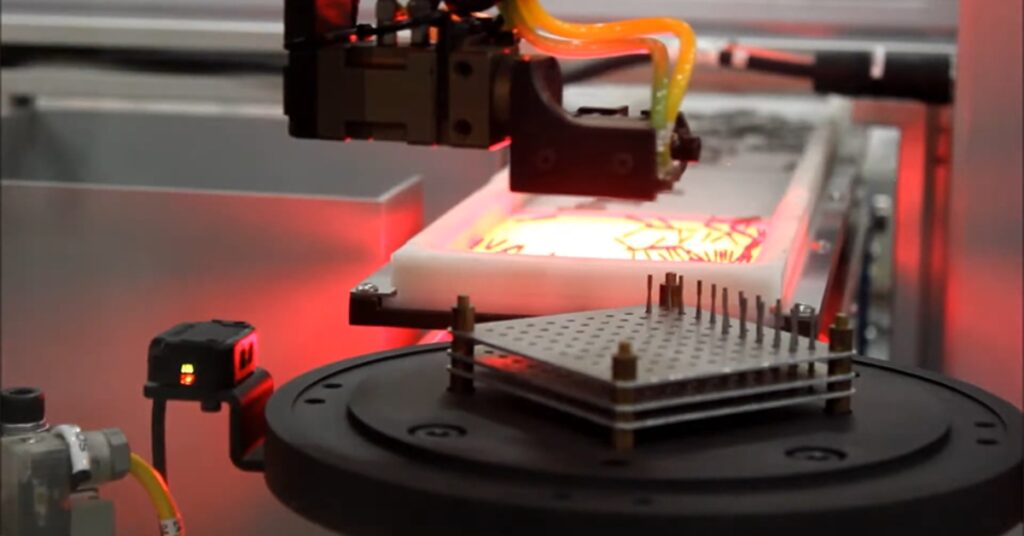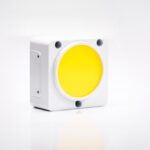
Robotics Technology-Based LED: Enhancing Lighting with Cutting-Edge Innovation

Have you ever pondered the transformative impact that robotics technology-based LED lighting could have on our world? The integration of these two cutting-edge fields, robotics and LED technologies, is not just a merger of convenience but a revolution in the making. This comprehensive guide delves into the captivating intersection of robotics and Flickering LED Light, unveiling how these innovations can enhance efficiency, sustainability, and functionality across a myriad of applications.
The Evolution of Robotics Technology-Based LED
Understanding Robotics Technology-Based LED
Robotics Technology-Based LED is the fusion of robotic systems with LED lighting solutions. This powerful combination harnesses the precision and automation capabilities of robotics to elevate the efficiency, accuracy, and adaptability of LED lighting systems. From automated lighting adjustments to intelligent maintenance, this amalgamation opens up a world of innovative, sustainable lighting solutions.
The Rise of LED Lighting
LED (Light Emitting Diode) technology has significantly evolved over the past few decades, becoming a preferred choice for various lighting applications due to its energy efficiency, longevity, and environmental benefits. Incorporating robotics technology into LED lighting systems is the next step in this evolution, promising even more incredible advancements and applications.
Critical Benefits of Robotics Technology
1. Enhanced Precision and Control
One of the most significant advantages of integrating robotics with LED lighting is the enhanced precision and control. Robotics can adjust lighting levels, angles, and colors accurately, ensuring optimal illumination for any environment. This precision is particularly beneficial in settings such as:
- Industrial facilities: Automated lighting systems can adjust to varying production needs, reducing energy waste.
- Healthcare: Precise lighting control can create optimal surgeries and patient care conditions.
- Retail: Adaptive lighting can highlight products and improve the shopping experience.
Increased Energy Efficiency
Robotics technology-based LED systems can optimize energy usage by adjusting lighting based on real-time data and environmental conditions. This dynamic adjustment leads to substantial energy savings, as lights are only used when and where needed. The benefits include:
- Reduced electricity bills: Automated systems minimize unnecessary lighting, cutting costs.
- Lower carbon footprint: Efficient energy use contributes to environmental sustainability.
Improved Maintenance and Longevity
Robotic systems can monitor and maintain LED lighting installations, identifying issues before they become significant problems. This proactive approach extends the lifespan of lighting systems and reduces maintenance costs. Key features include:
- Automated diagnostics: Robots can detect faults and perform routine checks.
- Predictive maintenance: Early detection of potential failures ensures timely interventions.
Adaptability to Various Environments
The versatility of robotics technology-based LED systems allows them to be tailored to various environments and applications. Some notable examples include:
- Agriculture: Adaptive lighting systems can optimize plant growth conditions in vertical farms and greenhouses.
- Urban infrastructure: Smart street lighting systems can adjust brightness based on pedestrian and vehicle movement.
- Entertainment: Dynamic lighting setups enhance concerts, theaters, and art installations.
Innovative Applications of Robotics Technology
Agricultural Innovations
Robotics technology-based LED lighting is revolutionizing agriculture by creating controlled environments that optimize plant growth. Automated lighting systems can adjust the spectrum, intensity, and duration of light based on the specific needs of different crops. Benefits include:
- Higher yields: Precise lighting conditions promote optimal plant growth.
- Resource efficiency: Reduced water and nutrient usage through tailored lighting schedules.
Healthcare Advancements
In healthcare, robotics technology-based LED lighting systems enhance patient care and operational efficiency. Applications include:
- Surgical lighting: Robots can adjust lighting angles and intensities to provide optimal visibility during surgeries.
- Therapeutic environments: Adaptive lighting can create calming atmospheres in patient recovery rooms.
Case Studies and Real-World Examples
Smart Cities
In innovative city initiatives, robotic technology-based LED lighting enhances urban infrastructure. Examples include:
- Barcelona, Spain: The city has implemented intelligent street lighting that adjusts based on real-time data, improving safety and energy efficiency.
- San Diego, USA: Integrating sensors and robotic controls in streetlights helps monitor traffic and environmental conditions.

Industrial Applications
In industrial settings, robotics technology-based LED lighting systems improve safety and productivity. Examples include:
- Automotive manufacturing: Automated lighting systems ensure optimal visibility for assembly line workers, reducing errors and improving quality control.
- Warehousing: Robotics-controlled lighting adjusts based on the presence of workers and vehicles, enhancing energy efficiency.
Future Trends in Robotics LED
Integration with IoT and AI
The future of robotics technology-based LED lighting lies in integrating the Internet of Things (IoT) and Artificial Intelligence (AI). These technologies will enable even more sophisticated control and automation, including:
- Predictive analytics: AI can forecast lighting needs and adjust systems proactively.
- Enhanced connectivity: IoT integration allows seamless communication between lighting systems and other smart devices.
Sustainability and Green Technologies
As sustainability becomes a global priority, robotics technology-based LED systems will continue to evolve to meet environmental goals. Future developments may include:
- Solar-powered lighting: Integration with renewable energy sources to further reduce carbon footprints.
- Biodegradable materials: Eco-friendly materials are used in the manufacturing of LED components.
FAQs
Q: How does robotics technology enhance LED lighting systems?
A: Robotics technology enhances LED lighting systems by providing precise control, automated maintenance, and adaptability to various environments, increasing efficiency and functionality.
Q: What industries benefit the most from robotic technology-based LED lighting?
A: Industries such as agriculture, healthcare, manufacturing, and urban infrastructure benefit significantly from robotics technology-based LED lighting due to its precision, energy efficiency, and adaptability.
Q: How does robotics technology-based LED lighting contribute to sustainability?
A: These systems optimize energy usage, reduce maintenance needs, and can be integrated with renewable energy sources, contributing to lower carbon footprints and greater sustainability.
Conclusion
Integrating robotics technology with LED lighting is not just a trend, but a game-changer. It offers enhanced precision, energy efficiency, and adaptability across various applications. As these technologies evolve, we can expect even more innovative solutions to transform industries and contribute to a more sustainable future. Embracing robotics LED lighting is not just a step forward in innovation but also a commitment to efficiency and environmental stewardship.




